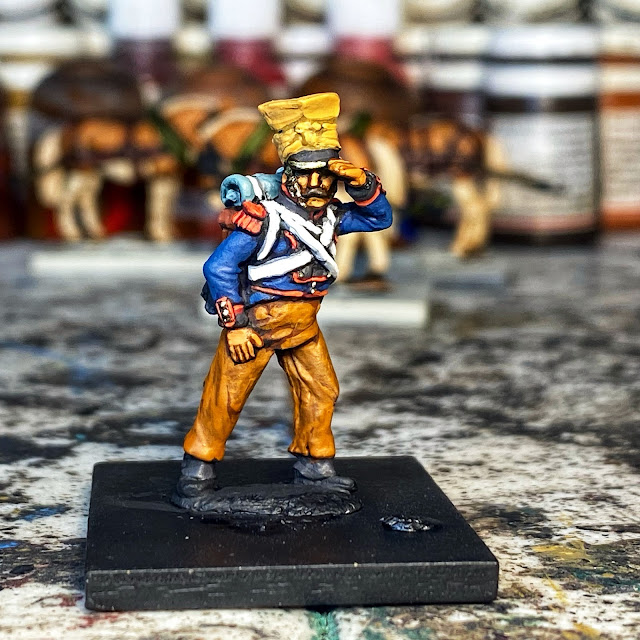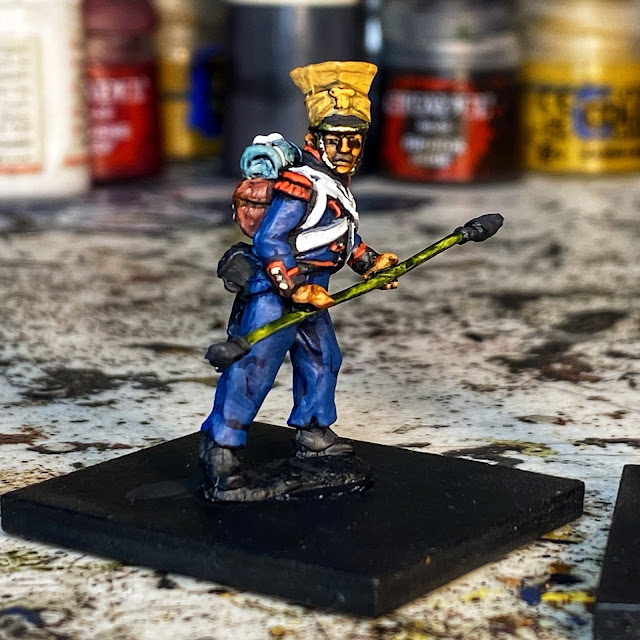"Somewhere in Spain, 1811—The rhythmic thunder of cannon fire echoes through the valley, sending plumes of smoke curling into the dry Iberian air. The Polish gunners, their czapkas adorned with the white eagle of their homeland, work with the precision of veteran soldiers. Exiled from their own country, they now fight for France—knowing that every shot fired against Wellington’s forces brings them one step closer to reclaiming Poland."
The Duchy of Warsaw’s regimental foot artillery was a force of grit, discipline, and national pride, forged in the fires of the Napoleonic Wars. Though technically under the command of the French Empire, the Polish gunners saw themselves as more than mere auxiliaries—they were the future army of a reborn Poland. Wherever they fought, they carried that dream with them, etched into every cannon barrel, packed into every powder charge.
In 1811, a battery of Duchy of Warsaw regimental foot artillery found itself attached to Girard’s reinforced division of the 5th Corps, fighting in the harsh and unforgiving terrain of Spain. These gunners, clad in blue coats with yellow facings and wearing the distinctive czapka, brought with them a reputation for deadly accuracy and sheer determination.
The Battle of Los Santos: Fire and Counterfire
The battery’s first major action in Spain came near Los Santos, where Girard’s force found itself outnumbered by an advancing British column under General Rowland Hill. The terrain was broken and rugged, limiting the effectiveness of cavalry, but the Polish gunners seized a ridge overlooking a key valley and positioned their 8-pounders to control the battlefield.
As Hill’s redcoats advanced, the Poles let loose a devastating barrage of round shot, tearing through the British ranks. When British artillery attempted to respond, the Polish crews countered with precise counterbattery fire, forcing the enemy guns to withdraw.
As the fight wore on, Hill sent forward his Portuguese and Spanish allies to flank the position. With no immediate infantry support, the Polish gunners did not abandon their cannons—they fought. Drawing their sabers and pistols, they held off the attackers long enough for reinforcements to arrive, cementing their reputation as soldiers who stood their ground no matter the cost.
Siege of Mérida: The Guns that Held the Line
During the French occupation of Mérida, the Duchy of Warsaw artillery played a critical role in holding off an Anglo-Spanish attempt to retake the town. Their guns, positioned along the crumbling Roman bridge over the Guadiana River, rained shot and canister on British and Spanish troops attempting to storm the crossing.
When ammunition began to run low, the gunners switched to a brutal defense, using their remaining powder to load whatever they could—scrap metal, nails, even broken bricks. This desperate but effective use of artillery fire broke multiple charges, forcing the enemy to withdraw and preserving the French hold on the town.
The Polish gunners of the Duchy of Warsaw were more than just artillerymen—they were patriots fighting on foreign soil for the dream of Poland’s restoration. Their precision, discipline, and refusal to abandon their guns made them invaluable assets on the battlefield. Though they fought under French command, they never forgot their homeland.
In Spain, where the heat, dust, and guerrilla warfare broke many French units, the Poles endured, their czapkas standing tall amid the smoke of battle. Whether on the march, in siege, or in the chaos of open battle, the guns of the Duchy of Warsaw never fell silent until the fight was won.
Would their sacrifices lead to the rebirth of their nation? Or were they merely pieces in Napoleon’s grand game, doomed to be abandoned when the tides of war shifted?
That, like the cannon smoke that drifts over the battlefield, remains lost to history.









Woderful stuff, well done sir
ReplyDeleteThanks man!
Delete